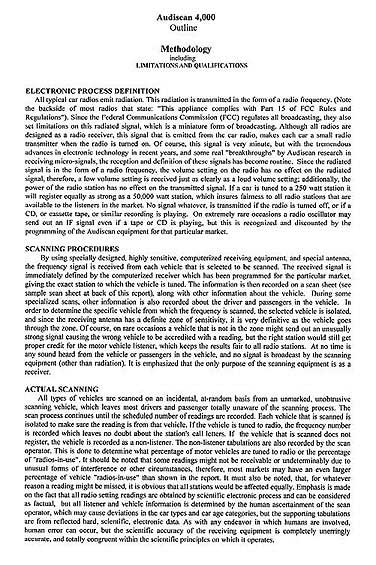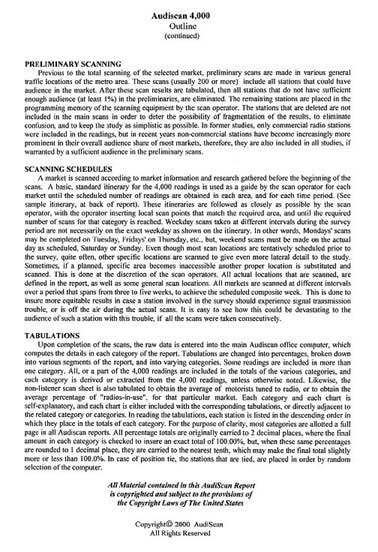|
What a Typical Audiscan 4,000 Report Contains:
Areas Scanned
1) General Business - 1,700 total readings in 5 time periods--readings taken in traffic at or near shopping centers,
malls, and main business arteries
2) Industrial - 600 total readings in 2 (drive time) periods--readings taken in traffic at or near industrial (work)
areas
3) Educational - 600 total readings taken in 2 (drive time) periods--readings taken in traffic at or near high school
and college areas (youth traffic)
4) Downtown - 500 readings in 4 time periods--readings taken in downtown traffic
5) Residential - 500 readings in 5 time periods--readings taken in residential areas (traffic only)
Actual locations scanned in each category are also shown.
Time periods covered are: 6am to 10am, 10am to 3pm, 3pm to 7pm, 7pm to 10pm, and 10pm to 1am.
Other categories extracted from these 4,000 readings include Saturday, Sunday, and Weekday.
Although discerned by the scan operator, car type categories and car age estimate categories are also supplied.
Overview includes: Survey dates, "radios in use", AM-FM comparisons, and other metro audience information.
Chart Types include format preferences, illustrated time period preferences, and audience divergence according to area.
(shows how each station's audience changes in different metro areas).
|




